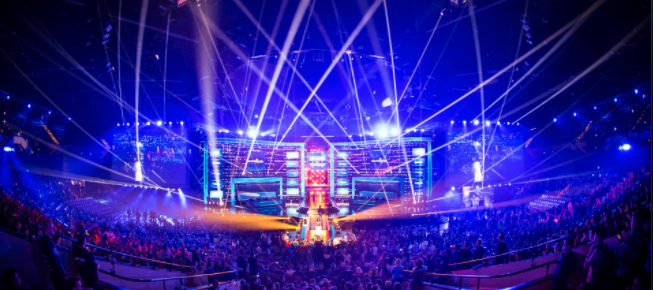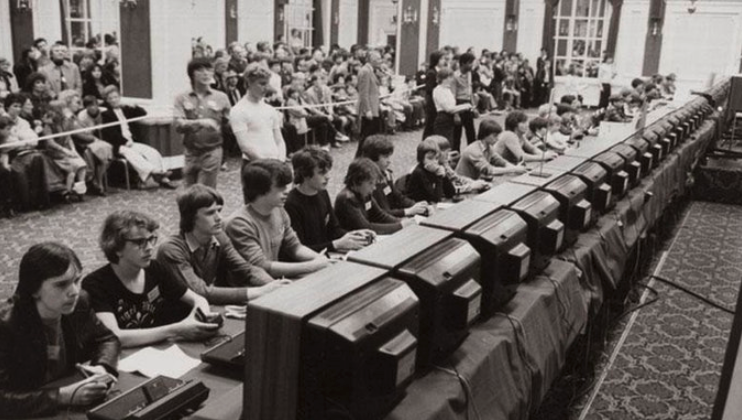Video gaming is always a welcome topic on this website and arcade gaming is one area we particularly feel an affinity for. From discussing our favourite arcade hits to making our very own cabinet, the subject is a fascinating area and many of the best known games from the 1970s and 1980s remain a key part of popular culture.
However, there was more to arcade gaming than just style, as there was nothing quite like challenging friends to see who could secure the best score – a feeling perfectly captured in episodes of Netflix’s huge hit Stranger Things and also the upcoming movie of the book Ready Player One. This idea of competition remains a key part of gaming today and no more so than in the world of eSports. Here, we take a look at why we think arcades played a key role in creating this incredible global scene.
Big business
Although it is on the cusp of breaking through into the mainstream, you could still be forgiven for not knowing exactly what eSports is. Well, to the uninitiated, the scene sees the best gamers in the world come together to do battle on a range of different games in order to win major prize money. How major? Well, The International tournament held last year in relation to the game Dota 2 had a total prize pool of more than $24 million. The incredible popularity of the scene has attracted the attention of big business in recent times, with major companies such as Audi and Betway sponsoring major eSports organizations such as Astralis and Ninjas in Pyjamas respectively. Other notable brands to have got in on the act include razor company Gillette, which has sponsored both teams and events like the League of Legends Intel Extreme Masters in Poland last year. The level of interest in competition even from non-techie brands means that many feel the only way is up for the eSports phenomenon.
Early days
So how does this huge multimillion dollar competitive gaming scene have its roots in arcade gaming? Well, as we have already mentioned, video gaming has always been built on taking on other players and enjoying that thrill of winning. You can trace this back to the earliest examples of games, such as Tennis For Two which was created by nuclear physicist William Higinbotham in 1958 after he realised that many science exhibits at the time tended to lack a sense of interaction. A forerunner to Pong, the game became a major hit on his lab’s visitor days with scores of people lining up to play against each other. A similar frenzy was created around Spacewar, a video game from the 1960s which was bizarrely created using funding from the Pentagon. As the War is Boring blog outlines, the game for the PDP-1 computer became so popular on university campuses that it was apparently banned during business hours at Stanford. It was also an inspiration to Nolan Bushnell, the creative mind who went on to found Atari – one of the original video gaming giants and a company which became synonymous with titles such as Pong and Space Invaders.
The dawn of eSports
The latter game arguably spawned one of the first major eSports events, when thousands of gamers took part in the National Space Invaders Competition in 1980.
According to AusRetroGamer, the competition featured regional events in cities including Chicago and New York and was arguably the first indication of just how big competitive gaming could become. Another sign that it could take off was the launch of the TV show Starcade, which was first shown in 1981 and saw gamers take each other on across a range of the latest arcade games. But with so many games and so many scores, how could people even track their performance against the very best? Fortunately, Twin Galaxies had this issue covered. The organisation was founded in 1981 and started out by simply visiting arcades across the US to record the high scores for a number of the most popular games, with the results then being released publicly so gamers could see just how good they were.
The birth of a phenomenon
So as you can see, there are a lot of developments in the story of arcade gaming which undoubtedly sowed the seeds for what is now known as eSports. With the competitive gaming world expected to go from strength to strength, we for one will never forget the important role that arcade gaming played in its creation.




Behind the Rapid Rise as the eSports Industry Passes $1 Billion in 2019 | Retromash
May 29, 2019 -
[…] in 1972. A few dozen students gathered at Stanford University to contest their Spacewar skills. The classic arcade game was a huge hit at the time in its 1200-pound casing. A year’s subscription to Rolling Stone […]
뉴토끼
Feb 9, 2025 -
You will face many defeats in life, but never let yourself be defeated. 뉴토끼